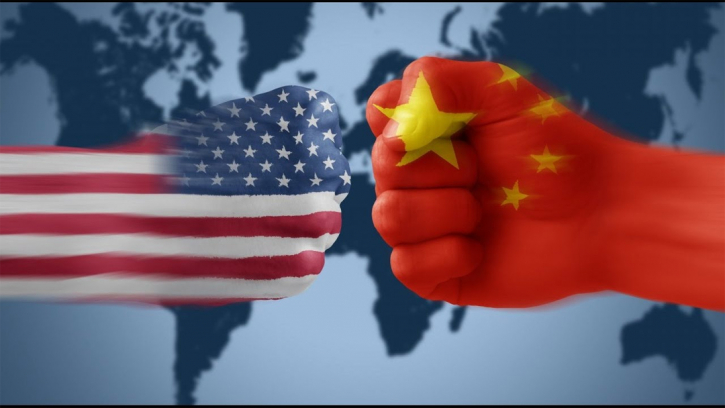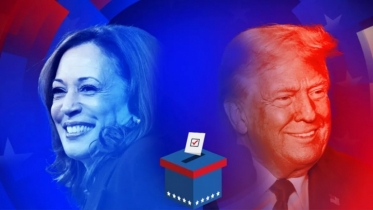
The Biden administration issued a National Security Strategy Memorandum that some say was a declaration of enmity against China just short of war. And at the Chinese Communist Party Congress in Beijing, president Xi Jinping warned of ‘dangerous storms’ facing China in the coming years.
This brings up the question: Is the world headed for what is called in international relations jargon as a ‘hegemonic transition’?
When we assess the situation of the world’s hegemonic power, what is clear is that financialisation and globalisation combined not only to create severe inequality, but they severely eroded the manufacturing base of the United States. And when we talk about deindustrialisation, we are talking not only about the loss of millions of manufacturing jobs, from 17.3 million to around 13 million today, but about the loss of the channels for the generational transmission of skills of the workforce, in semi-skilled and some skilled industries.
Equally important has been the loss of the synergy between manufacturing and technological creativity in the center economies and its emergence in rapidly industrialising economies. Contrary to expectations that the peripheral economies would be limited to providing cheap labor while the center economies would monopolise knowledge intensive activities, high tech offshoring followed manufacturing offshoring.
One important study of eight advanced economies showed that high-tech offshoring increased in less than one decade from 14 per cent in the late 1990s to about 18 per cent in 2006. As Branko Milanovic has pointed out, ‘innovation rents, received by the leaders of the new technologies, are being dissipated away from the center.’ Aggressively reversing this technological flow was, in fact, the centerpiece of Donald Trump and his economic adviser Peter Navarro’s political economy.
America’s comprehensive crisis
BUT what overdetermines the current crisis of the hegemon is that it is not just economic but also ideological and political.
The British Marxist Paul Mason has argued that with the triumph of neoliberalism and financialisation in the global North, solidarity and a sense of community based on economic class and a shared middle class lifestyle among workers was replaced by an individualised identity as consumers, as market players in a society of seemingly shared prosperity but where rising income was increasingly replaced by rising debt as the mechanism of economic pacification.
Having exchanged their class identity for that of consumers in the market, their loss of even the latter owing to the 2008-2009 crisis left them ideologically vulnerable, particularly when it came to their commitment to the liberal democratic belief in universal equality. Even before the financial crisis, many workers had already been feeling psychologically threatened by the gains of the movements for racial and gender justice, and their descent into economic insecurity was the final step in their rightward radicalisation.
What the volatile combination of economic crisis, ideological vulnerability, and Donald Trump has done is to make legitimate if not respectable an anti-democratic core belief that has been transmitted generationally, communally, and subversively. This is White Supremacy, which is now informally the ruling ideology of the Republican Party.
Finally, to the political crisis. I don’t think there would be many who would object to our characterising American liberal democracy as being in crisis. I think the dispute would be over how serious the crisis is. In her book How Civil Wars Start, Barbara Walter writes:
Where is the United States today? We are a factionalised anocracy [a degenerating democracy] that is quickly approaching the open insurgency stage, which means we are closer to civil war than any of us would like to believe. January 6 was a major announcement by at least some groups…that they are moving toward outright violence… In fact, the attack on the Capitol could very well be the first series of organised attacks in an open insurgency stage. It targeted infrastructure. There were plans to assassinate certain politicians and attempts to coordinate activity.
Now Walter’s profile is not that of someone crying wolf. She is not someone speaking from the left. In fact, she’s very establishment, a specialist in comparative civil wars who has used several databases, the most important of which is the CIA’s Political Instability Task Force, of which she is a part.
For Walter and her CIA colleagues, ethnicity has emerged in their global comparative studies as the prime predictor of susceptibility of a society to civil war — and in the US, armed white radicals are on the cutting edge. However, ethnicity by itself does not produce conflict. It needs triggers or ‘accelerants,’ and these are the emergence of hegemonic ethnic groupings or ‘superfactions,’ the exacerbation of conflicts by ‘ethno-nationalist entrepreneurs,’ and the frenzied mobilisation of ordinary citizens who feel that only the armed ethnic militias stand between them and those who would destroy them and their world.
And to move from A to Z, social media, in particular Facebook, have become a central weapon of radicalisation. The angry buzz in white nationalist chat rooms these days is the ‘Great Replacement Theory,’ wherein whites are said to be the victims of an ongoing conspiracy hatched by Jews, blacks, feminists, LGBTQIAs, migrants, and Democrats to make them a minority and eventually destroy them in a race war.
Now the reason we have spent some time detailing the ideological and political dimensions of the crisis of the liberal international order is that when many people talk about hegemonic decline, they consider mainly its economic dimension. Equally important are the political and ideological dimensions. When some analysts speculated about the possible loss of US hegemony to Japan back in the late 1980s, they had in mind only the economic dimension. And while this was the central consideration, their neglect of the political and ideological dimensions of the relationship was one reason their predictions about Japan supplanting the United States went awry.
To repeat, what distinguishes the crisis of the hegemon today from the 1980s is the fatal combination of severe economic dislocation, deep ideological disaffection, and profound political instability. Global hegemony is difficult to exercise if, in addition to falling behind on the economic front, the hegemon is also The Chinese challenge
LET us now turn to the question of whether some other power is moving to replace the United States on center stage. China is, of course, what everyone talks about as the chief candidate, and it is on the economic front that China’s challenge is strongest.
In his book The Great Convergence, Richard Baldwin tries to explain how China was transformed from being not only an industrial non-competitor but an outsider in the global capitalist system in the 1970s to becoming the world’s prime industrial superpower in just over two decades.
China, he says, was smart enough to capitalise on its having joined the capitalist world economy at the time when what he calls globalisation’s ‘second unbundling’ was taking place. This was the breaking up of the productive process globally made possible by advances in information technology, resulting in a revolutionary innovation: the corporate global value chain. The key feature of this process has been, as we noted earlier, the dispersal of diffusion of high technology from the knowledge-rich capitalist center economies to the labour surplus peripheral countries.
nearing civil war and a significant sector of the society has lost faith in the liberal democratic ideology that legitimises its global economic primacy.
Walden Bello is author or co-author of 19 books, the latest of which is State of Fragmentation: the Philippines in Transition (Quezon City: Focus on the Global South and FES, 2014).





































